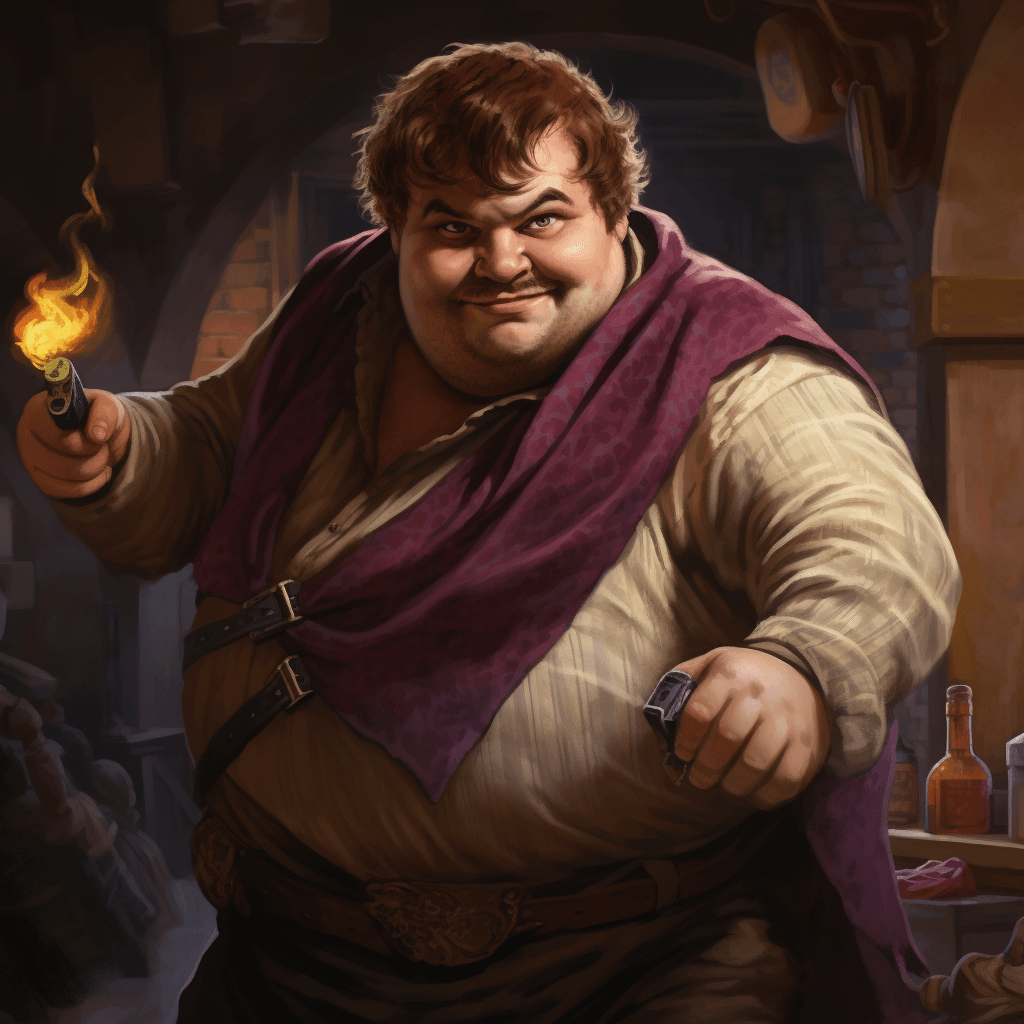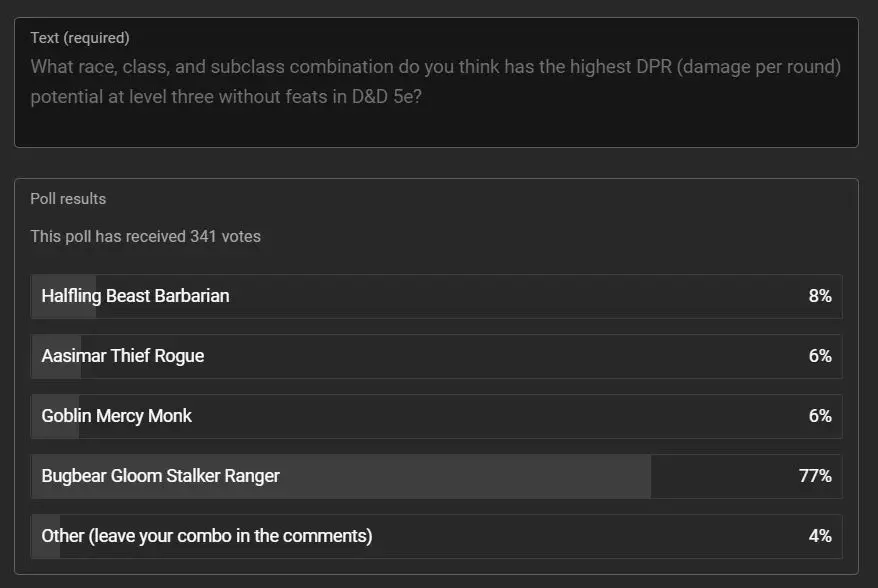The featured image for this Thief Rogue D&D 5e article is found in Wizards of the Coast’s Acquisitions Incorporated book (with alterations).
This article contains affiliate links that add gold to our coffers, and Midjourney may generate some artwork for visual appeal and fun.
One of D&D 5e’s least-picked subclasses is the Thief Rogue. I want to show readers that this subclass is a gem that should be heavily considered to play. Thieves need a few details to be clarified with a DM ahead of time, but circumstances can make Thieves into some of the best Rogues for players to enjoy.
How to Play a Thief Rogue
The Thief’s most exciting features are Fast Hands and Use Magic Device. I’ll go over both in detail to enable you to play a Thief Rogue and enjoy it to the fullest. Heed my advice on what you should consider asking your DM before playing a Thief Rogue.
Stealing is a social construct.
-Flutes
The Thief Rogue’s Fast Hands (3)
I suspect many players read Fast Hands and get stuck on the Sleight of Hand option. While that’s great, the most exciting Fast Hands detail is the ability to Use an Object as a bonus action. The “Use an Object” action allows you to use non-magical items that typically specify that they require an action to use. Several items in the PHB involve attacks. You use those items as improvised weapons, meaning Fast Hands can function as a bonus action attack.
I love this because D&D 5e offers little incentive to use adventuring gear. Have you ever seen someone throw a vial of acid? Did you see it more than once? Thief Rogues are built to use those items. This kind of fringe-rule incentive is alluring to me. I believe the most exciting character options are ones that help you accomplish your goals with abnormal tactics.
Sleight of Hand can help swipe a spellcaster’s unheld component pouch or arcane focus. If your DM thinks it’s feasible, you might even be able to apply manacles to an enemy mid-combat.
Improvised Weapons and Fast Hands
I’m going to explain how to use improvised weapons with Fast Hands. Several details can get confusing, so buckle up and get ready to review these details with your DM!
It’s a common mistake for players not to realize potions are magic items. Magic items are incompatible with Fast Hands, so Thief Rogues cannot drink potions as a bonus action.
You can make improvised attacks with the Use an Object action because specific items say you can use them with an action. Some of those items specifically say their use in this way involves an improvised weapon attack. You’ll use these instances in combat with Fast Hands to maximize your damage output.
Ask your DM whether they’d allow you to use other items not specified in the PHB and other books.

Sneak Attack and Dexterity Modifier for Improvised Weapons
Depending on your DM, you might be able to Sneak Attack by making a ranged weapon attack with an improvised weapon using your Dexterity! You can use Dexterity as your attack modifier, but your DM will decide if improvised weapons count as “ranged weapons” per the Sneak Attack rules. Your thrown improvised weapons will undoubtedly be ranged attacks. They should count as ranged weapons even though they don’t appear on the weaponry table in the PHB.
Why is it essential to use Dexterity instead of Strength for your improvised weapon attacks? I found that it’s mechanically challenging to play a Thief Rogue who focuses on Strength or invests in both Strength and Dexterity like a MAD lad (multiple ability-score dependent). I realized a Thief doesn’t have to be MAD to use Fast Hands effectively.
For some reason, I thought Strength was the default for ranged weapons that are thrown. That was incorrect. Dexterity is the default for ranged weapons unless a weapon possesses the “thrown” property. This rule is found in the “Making an Attack” section of chapter 9 in the PHB.
There is a caveat here. The rules for improvised weapons say that a DM can decide if an improvised weapon resembles a proper weapon enough to treat them similarly. If your DM sees your character using an acid flask, for example, your DM may rule that you’re using Strength. Ask your DM how they’ll rule these things when you play a Thief Rogue. I can’t stress this enough! If you want some ammo to back up the idea that an improvised weapon can count as a ranged weapon, point your DM to the definition of “Ranged” in the weapons section of the PHB and point out that improvised weapons have the specified range described there.
If your DM allows you to deal Sneak Attack damage with ranged improvised weapon attacks, you can use your action to Ready an attack. This will allow you to deal Sneak Attack damage twice per round instead of once on your turn.
If you need a refresher on how Sneak Attack works and how you can work with it, here’s my article on Sneak Attack tactics.

Proficiency with Improvised Weapons
Your DM can decide that an improvised weapon is similar enough to an actual weapon to treat it as such and allow you to include your PB as an attack modifier. If not, you’ll need the Tavern Brawler to gain proficiency with improvised weapons. Tavern Brawler doesn’t make or break this subclass, but it’s nice to be more accurate with your Fast Hands attacks with improvised weapons.
If your DM isn’t keen on your improvised weapons resembling actual weapons, they default to using 1d4 damage (with a range of 20/60 when ranged). Your DM decides the damage type of the 1d4. An acid vial would probably deal acid damage, for example.
Best Items for Fast Hands
These items can actively be used as improvised weapons or terrain effects with Fast Hands. Download my spreadsheet for more information on each item.
Grenades (Smoke, Fragmentation, & Tangler)
The DMG describes several grenades, and Dungeon of the Mad Mage introduced the “tangler” version. As you can imagine, these can be valuable for dealing damage or controlling an area. The damage from the fragmentation grenade with 5d6 piercing damage isn’t massive, but dropping a mini-Fireball can be handy for a Rogue. The smoke bomb is excellent for obscurement. The DMG doesn’t suggest how to gain these items or how much gold they’d require.
The Dex save DCs for a fragmentation grenade is 15 for 5d6 piercing damage (half on success). The Dex save DC is the same for tangler grenades. Failed saves against tanglers will restrain a creature. A restrained creature can use an action to make a DC 20 Strength (Athletics) check or apply a gallon of alcohol to dissolve the sticky webbing.

Bomb
This isn’t as potent as a fragmentation grenade, so it’s probably cheaper for smaller spaces. Their costs and acquisition methods are unspecified, but these are acceptable if you don’t have better options. The Dex save DC is 12 for 3d6 fire damage (take all or no damage).
Alchemist’s Fire & Alchemist’s Doom
You’ve probably heard of Alchemist’s Fire, but Alchemist’s Doom is its less-known upgrade from Strixhaven: Curriculum of Chaos. I’m pleased that WotC printed an upgraded version of Alchemist’s Fire because it’s not worth the action it takes to use it. A Thief Rogue, however, can afford a bonus action to use either version to immolate an enemy. These are used as improvised weapons in addition to their usual effects.
If you want to make your head spin, check out this Jeremy Crawford Twitter conversation about how damage works with Alchemist’s Fire.
Dynamite Stick
This is the good stuff if you can get sticks in bulk. The more sticks you have, the more damage you can dish out. The Dex save DC is low at 12 for 3d6 bludgeoning damage with an additional 1d6 per stick (maximum 10d6). Success on the saving throw halves the damage.
Acid (Vial)
You can make an improvised ranged weapon attack to deal 2d6 acid damage. Alchemy Jugs are perfect for supplying you with acid.

Ball Bearings (Bag of 1,000)
Using ball bearings will be more useful in bottleneck areas at low levels. Their Dex save DC is 10 for a creature to fall prone unless moving at half speed.
Caltrops (Bag of 20)
Caltrops cover a smaller area than ball bearings, but their Dex save is higher at 15 and can stop an enemy’s movement while dealing damage and slowing them for a while. Enemies can move slowly to avoid the saving throw.
Holy Water (Flask)
You can make an improvised ranged weapon attack, but I wouldn’t recommend it unless your target is a fiend or undead. Those creatures will take 2d6 radiant damage.
Oil (Flask)
This is one of the most unclear items in the game. You can combo this item with a fire attack to boost the fire damage by five. Oil flasks are also used for improvised ranged weapon attacks so that you can deal impact damage, too.
Oil is your most affordable option for Fast Hands attacks. It combos well with fire users, but otherwise it can deal impact damage. However, you’d deal as much damage with a water flask if you do not rely on the oil’s fire combo. Talk to your DM about having fun with improvised weapons that don’t have a specific description of how to use them in the book.
Healer’s Kit
Thieves make excellent combat medics. When an ally is dying with zero hitpoints, you can use a bonus action to stabilize them with your Healer’s Kit.

Item DCs Don’t Scale or Diminish
The fixed DCs of items can be blessings or curses to their users. Thief Rogues might not have the stats or proficiencies to give items substantial DCs, so high fixed DCs are fortunate boons to the Thief. However, the same could be assumed for Thieves having higher DCs than an item’s fixed DC.
In other words, your stats don’t matter for many items’ descriptions (except for improvised weapon attacks). I recommend asking your DM if you can create or otherwise utilize items with higher DCs than they would typically have. This DM allowance would make your Thief scale better as they level up.
Other Adventuring Gear for Potential Fast Hands Utility
Several other items could be useful to you with Fast Hands or otherwise. I’ll mention them briefly for your reference:
- Blasting Powder
- Explosive Seed
- Gunpowder (Keg, Powder-Horn)
- Climber’s Kit
- Hunting Trap (this one is interesting because it says you can set it as an action, but not what it takes to anchor it)
- Lantern, Hooded
- Poison, Basic (Vial)
- Tinderbox
- Antitoxin
- Manacles (this is another poorly worded item)
Pay-to-Win
Playing a Thief can feel like a micro-transaction game. If you’re not consistently receiving gold, you might worry about wasting it on one-use items for Fast Hands attacks. I recommend focusing on cost-effective items.

Alchemy Jug Money Saver for Thief Rogues
Utilizing an Alchemy Jug can make oil and acid flasks during downtime. This is a fantastic way to save gold while enabling your Fast Hands during combat for offense. It also removes the need to visit towns often or carry heaps of flasks when you set off for adventure.
Alchemist’s Supplies
You might obtain proficiency with Alchemist’s Supplies. This is useful if you use the XGtE rules that suggest how a DM can make tool proficiencies more worthwhile. The XGtE rules allow you to make checks to produce items like Alchemist’s Fire in exchange for gold.
I recommend roleplaying how you gather supplies for your alchemy. You can hand-wave it and say you find the supplies, but describing the process should be fun.
Second-Story Work (3) Thief Rogue Feature
While not as good as Spider Climb or proper climbing speed, this feature allows you to shimmy up battlefield environments quickly to stay out of trouble. With this feature, you can easily stay out of reach to lob alchemical flasks and launch crossbow bolts at enemies.
You can also jump better, but that won’t come up often. Please don’t forget you can jump farther than other characters with this feature because you’ll facepalm if you forget and realize you could’ve used your jumping effectively.

Supreme Sneak (9) Thief Rogue Feature
Most of the time, this will equal a default advantage on Stealth checks. This allows you to gather reconnaissance information and set up ambushes with ease. If you’re lobbing smoke grenades and you move slowly, you can easily hide your presence in combat by utilizing Cunning Action.
The Thief Rogue’s Use Magic Object (13) Feature
Level-thirteen Thief Rogues ignore the following requirements of magic items: class, race, and level. The Use Magic Object feature says you can “use” the magic items, which I believe most people will interpret to include attunement in the features you can ignore.
“A magic item, such as certain staffs, may require you to use your spellcasting ability when you cast a spell from the item. If you have more than one spellcasting ability, you choose which one to use with the item. If you don’t have a spellcasting ability – perhaps you’re a rogue with the Use Magic Device feature – your spellcasting ability modifier is +0 for the item, and your proficiency bonus does apply” (DMG, p.141)
The downside of this ability is that Arcane Tricksters or multiclassed Rogues can achieve similar outcomes. You can use more magic items than they can, so take note of any magic items that require more than merely being a spellcaster. You also won’t get much use out of magic items that rely on your spell save DC because you don’t have one, and you don’t have spell modifiers to boost. This rules out many magic items as useless to you without multiclassing.
There is an argument to be made here that other party members for whom the items are intended will use the magic items, not the Thief. Players may view the Thief player as a… well… thief! Ensure other players know you can potentially use the items and talk with the group about it. Instead of giving a Staff of Power to your party’s Wizard to do more wizardry, your Thief could use the staff to double your Wizard’s magic output when the situation is suitable. Some magic items won’t require attunement, so you could share them amongst the party as needed.

Magic Items That Thieves Can Use
I combed through the available magic items in the official D&D 5e books to find the magic items that the Thief can use that other Rogues can not. I’ll summarize the best options below, but remember your DM may homebrew items that your party finds. Many by-the-book magic items that can be used with this feature don’t require attunement, so you can still attune to other magic items while juggling wands!
Since the Thief is not a spellcaster, this note from the DMG is vital for activating magic items when they depend on the user’s spellcasting modifier. “If you don’t have a spellcasting ability – perhaps you’re a rogue with the Use Magic Device feature – your spellcasting ability modifier is +0 for the item, and your proficiency bonus does apply.”
Here are the magic items you can use that would typically be unavailable to you (or you can download my spreadsheet with more information on each one):
Magic Staff
- Staff of…
- Fire
- Frost
- The Adder
- Healing
- Power
- The Magi
- Swarming Insects
- The Woodlands
- The Python

Magic Wand or Rod
- Rod of…
- Resurrection
- The Pact Keeper
- Wand of…
- Binding
- Fireballs
- Lightning Bolts
- Paralysis
- Polymorph
- Web
- Wonder
- The War Mage
Other Magic Items
- Holy Avenger
- Instrument of the Bards
- Robe the Archmagi
- Moonblade
- All-Purpose Tool
- Cauldron of Rebirth
- Guardian Emblem
- Lyre of Building
- Nature’s Mantle
- Reveler’s Concertina
- Necklace of Prayer Beads
- Tome of the Stilled Tongue
- Whelm
- Alchemical Compendium
- Astromancy Archive
- Atlas of Endless Horizons
- Bell Branch
- Crystalline Chronicle
- Devotee’s Censer
- Libram of Souls and Flesh
- Moon Sickle
- Spell scrolls!

Magic items in adventure modules can also apply here, but those modules often don’t get a Thief Rogue to level thirteen.
You should utilize spell scrolls as a Thief Rogue. Any spell scroll becomes yours for the taking!
Thief’s Reflexes (17) Capstone Feature
I didn’t consider this for my DPR calculations since it only affects the first round of combat, but this feature is incredible. Taking two turns during the first round of combat is terrific for you and your squad. You can assist in taking down big targets before they get a turn (or at least a second turn) and controlling the terms of engagement.
This feature incentivizes you to attack and flee the fight so you can strike again later. If you roll Initiative again, you get another turn. If you want to end a fight and start it again, I recommend running that by your DM to ensure they don’t veto it. At level seventeen, you’re the ultimate in guerilla warfare.
Finally, Thief’s Reflexes does not work when you’re surprised.

Combat Tactics for Thief Rogues
Analysis paralysis is real for Thieves. You’ll probably have many items handy, so you must know which ones to use in a given situation. You’ll also want to identify the go-to items you’ll default to for general combat damage (probably acid or oil).
Your Thief can specialize in ranged attacks while lobbing items. You could also choose melee attacks with a cantrip like Booming Blade to boost your damage, but your ranged improvised weapon attacks will have disadvantage unless you take a feat to negate that detail (Gunner or Crossbow Expert). If you want to use Booming Blade, pick High-Elf as your lineage to get a cantrip at character creation. You can use a mount to mitigate the disadvantage problem, supporting your bonus action attacks with items when enemies are adjacent. The mount can Disengage and move you away from an enemy while freeing you up to focus your action economy on attacks. The enemy will also take more damage from Booming Blade if it is forced to chase you. The mount also counts as an ally when you need to secure Sneak Attack damage.
I’d default to using my crossbow and an item as a bonus. I’d also utilize the Thief’s Second-Story Work feature to climb out of reach. Not every situation will have high ground to climb, but don’t forget your climbing skills. Climbing can be as good as flight in the right circumstances.
You might eventually pick the Ritual Caster feat to cast Phantom Steed. A mount allows you to position yourself easily in combat without risking much. Escape and repositioning are much easier with a mount.
Another option for a melee-based Thief Rogue is to play a Bugbear and utilize the lineage’s long arms to avoid adjacency to enemies. You won’t be using Booming Blade from this range because the spell’s description limits it to enemies with five feet. If your DM overlooks that detail and allows you to use Booming Blade from ten feet away, you can learn the cantrip by multiclassing or taking a feat.
Mid-liner
I typically find that a character wants to be next to the enemies or as far away as possible, but the Thief needs to scoot up from the backline a bit. Most improvised weapons will have disadvantage beyond 20 feet, so keep your Thief several squares behind your melee allies. If enemies choose to charge toward you, Uncanny Dodge and Cunning Action are your go-to defensive tools to avoid damage and reposition yourself.

Thief Rogue DPR (Damage Per Round)
Assuming you don’t have fragmentation grenades, you can still dish out significant damage at level three. You’re DPR at levels three and four is godly, though it drops off at later levels. DPR won’t fall below the Treantmonk baseline (Warlock using Eldritch Blast with Hex and Agonizing Blast), but you scale similarly to it after level four. My calculations assume two targets in the blast area, but DPR will naturally increase with more targets.
However, if you have fragmentation grenades, you can significantly surpass the DPR baseline. At levels three and four, you can surpass the baseline by 4x. It remains impressive beyond level five, though not as dramatically above baseline as at levels three and four.
As an important note, I only assume enemies will move away 5% of the time to provoke opportunity attacks or proc Booming Blade damage. Other DPR analysts are more liberal with their assumptions about these damage instances. I’ve usually seen them assume they achieve this out-of-turn damage every round, but that’s highly unrealistic. As a result, my DPR calculations for the Thief Rogue are lower than they would be with the assumptions of other DPR analysis styles. This only applies to melee-based DPR analysis. Another complication with the melee DPR is that a Rogue wouldn’t normally stand next to an enemy, but Thief Rogues like to use their bonus action for Fast Hands instead of Cunning Action. Keep that in mind because it’s a flaw in the analysis and a vexing detail, in my opinion.
My DPR calculations don’t account for the level-seventeen Thief’s Reflexes feature during the first round of combat. However, if your combats are short and far between, Thief’s Reflexes inflates in value.
Here are screenshots of a few DPR calculations if you’re interested, and you can focus on the right-most columns if you want the DPR vs. baseline quickly:




I ran a poll on YouTube to see how people felt about recent race changes to the game while seeding the idea that the Thief might be more formidable at level three than people realize. Here’s how that poll went (there was a lot of hype for the round-one Bugbear):

Noteworthy Feats for Thief Rogues
As I explored the strengths and limitations of the Thief Rogue, here are the feats that stood out as uniquely applicable for a Thief:
Elven Accuracy: If your allies have reliable ways to grant you advantage on attacks, or if you want to use Steady Aim instead of Fast Hands sometimes, Elven Accuracy can make your attacks far more reliable.
Mobile: If you’re mixing melee attacks with ranged improvised weapons on the same turn, Mobile is an alternative to using a mount to get you away from the enemy like a proper harasser. You don’t want disadvantage on your ranged improvised attacks due to nearby enemies.
Piercer: This is a solid feat for crossbows but not as impactful as you may think. I like that it boosts your Dexterity.
Ritual Caster: Ritual spells are fantastic. Phantom Steed would be extremely useful for you.
Sharpshooter: With this feat, your improvised weapon attacks won’t have disadvantage up to sixty feet. Paired with Tavern Brawler for improvised weapon proficiency, you might be able to consistently get +10 damage to your ranged weapon attacks with improvised weapons.

Tavern Brawler: You can gain proficiency in improvised weapon attacks, enhancing your DPR when using items offensively with Fast Hands.
Magic Initiate / Artificer Initiate: These feats allow you to learn Booming Blade if you want it and don’t have another way to learn it. I’d probably multiclass with Artificer instead of picking these feats.
Alert: You don’t want to waste your first turn repositioning yourself, so winning Initiative is essential.
Sentinel: This is handy for melee builds to secure more reaction attacks for out-of-turn Sneak Attack.
War Caster: If you’re rocking the Booming Blade, you might want to use it for more damage as a reaction when you make opportunity attacks. Jeremy Crawford clarified that Booming Blade can be used with War Caster opportunity attacks.

Multiclassing Thief Rogue
Taking skills from other classes may help a Thief to excel. Here are some ideas for multiclassing your Thief Rogue!
Artificer Multiclass
Two levels of Artificer are very useful for you because you can create your own Alchemy Jug using your Infusions. As I mentioned, an Alchemy Jug saves you heaps of gold as a Thief who uses single-use improvised weapons (acid and oil). You can take a third Artificer level to grab a subclass, but it’s not required.
The Repeating Shot Infusion also allows you to fire a one-handed crossbow while holding a shield in your other hand. This works because the crossbow will load itself without requiring your other hand to load the weapon with ammunition.
Artificer levels are also helpful for gaining a few spells, including the Booming Blade cantrip. You also become proficient with medium armor and shields. Gaining a spellcasting feature will also resolve the problematic Use Magic Object options since you’ll have a proper spellcasting ability for modifiers and DCs.
Wizard (Conjurer) Multiclass
As many have commented on my Thief Rogue YouTube video, the Conjurer is a fun multiclass for Thief Rogues. They can conjure small items that the Rogue wants to throw with the Use an Object action to make improvised weapon attacks. This synergy means the Rogue doesn’t have to spend all its gold on items and pocket space.

Reflavoring the Thief Rogue Character Concept
Your character may be less roguish and more of a researcher. Maybe you delve into ancient dungeons as an archeologist. You could be an alchemist, pyromaniac, or trapped. I mentioned earlier that you might make an excellent combat medic. Thieving may not be your actual skill set. Sure, you’re quick-handed and athletic, but you don’t necessarily use your skills for stealing.

What Would I Change About the Thief?
I would add/change the following aspects of the Thief Rogue to make it play smoother:
- Fast Hands includes proficiency with improvised weapons.
- Second-Story Work allows the Thief to jump once per round without requiring movement as long as the Thief’s walking speed has not been reduced below 25.
- Supreme Sneak allows the Thief to Hide even when only behind 3/4 cover. I might even go 1/2 cover.
- Use Magic Device specifies that the Thief can select Intelligence, Wisdom, or Charisma as a spellcasting modifier.
Conclusion
I trust that I’ve imparted how attractive the Thief Rogue is. You’ll want to communicate with your DM about playing one, but that is the case with most D&D 5e concepts I want to play. It turns out the rules aren’t as clear or agreeable as they may seem! Communicating with your DM is one of the best player skills you can develop.
Thieves can function as versatile strikers, blasters, medics, spies, and more if you and your DM know what you want to achieve. Your DPR can be incredible at low levels and functional with surprises at higher levels. As long as you’re well funded, you’ll rise the adventuring ranks to renown in the land.

Read more Rogue content from us here before you go! Leave a comment with your thoughts and experiences with the Thief. Have a fantastic adventure this weekend, and take care.




